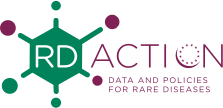Task-Force Priorities and Next Steps
- Pursue the priority to incorporate the OrphaCode to the Patient Summary by preparing a concept paper demonstrating the impact and benefits for MS, should the eHN decide to adopt this proposal. Consolidate links from this work with RD-ACTION WP5.
- In the broader RD-ACTION work to define guidance for data collection and sharing in ERNs, alongside promotion of approved standards for RD data such as Orphacode and HPO, it is important to emphasise the importance of FAIR data, which is an increasingly influential concept in big-data generally (for instance, all data uploaded to the European Science Cloud will need to conform to FAIR principles). This Joint Action guidance is designed to guide the Networks, focusing first and foremost on care and standards to optimise this, and advancing to registries – the approach needs to be cautious and supportive.
- The iTF should seek funding opportunities to enable it to achieve practical progress in helping ERNs to become interoperable within and without their immediate sphere – this could involve interoperability with national eHealth systems, with the NCPeH, etc. It may be possible to focus on a single ERN, as a pilot essentially, and demonstrate how to become ‘holistically’ interoperable.
- The TF retains its initial goal to define the contents of a Roadmap (in the mould of the CALLIOPE roadmap) – to do this, the TF members will update its schema of the ‘big picture’ of the eHealth, big-data, and rare diseases fields, illustrating how and where they interact –and intersect- at present, and most importantly how they should engage in future. In addition to the eHealth platforms and infrastructures, it is important to include RD-specific platforms such as the interoperability platform of RD-Connect and ELIXIR.
